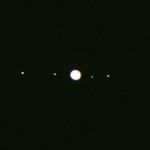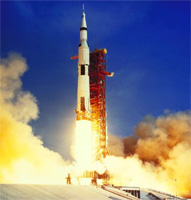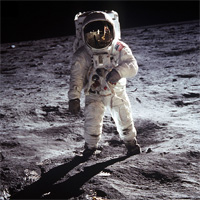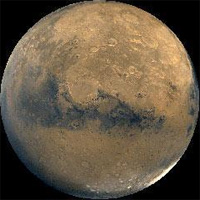 I’m heading off to WorldCon this morning. I haven’t been since 2000 in Chicago, mostly because of the kids and the difficulty of travelling. Now, of course, the kids are older, and this year it’s just down the road in San Antonio. I’m definitely looking forward to it, but at the same time, I have to admit I’m a little disappointed in the programming.
I’m heading off to WorldCon this morning. I haven’t been since 2000 in Chicago, mostly because of the kids and the difficulty of travelling. Now, of course, the kids are older, and this year it’s just down the road in San Antonio. I’m definitely looking forward to it, but at the same time, I have to admit I’m a little disappointed in the programming.
You see, in all my years of going to SF/F conventions, I’ve often attended the writer-centric panels. They tended to be split between the craft itself and a dozen different ways of asking the question, “How do I get published?” I’m still interested in the panels discussing the craft of writing, but I’m no longer interested in the panels on getting published. I chose to go indie, so I’m not particularly interested in tips on crafting an agent query letter.
But I figured that with self-publishing (or indie publishing as the cool kids say) on the rise, there would be some panels talking about that. Well, no, it turns out there aren’t any. The closest it comes is what looks to be a defense of traditional publishing with all the agents, editors, and publishers holding the line and a separate discussion on the transition from print books to e-books, though not about the business changes that represents.
Meanwhile, I have seen estimates that anywhere from 10%- 30% of the SF stories being read today are by independent authors like myself. A quick glance at Amazon’s top 20 SF books shows me that about half of them are from indie authors. Mind you, this is across all SF books, not just SF e-books. Amazon represents about half of the US book market, so even if you cut that ten of twenty in half, you still have about 25% of those top sellers coming from the indie world. (A brief note to statisticians: I realized this is a very rough estimate, but there are no real, solid numbers available on this anywhere.)
Apparently, whoever did the programming for this year’s WorldCon didn’t get the memo. I can’t entirely blame them though. Most of their main guests and headliners come from the ranks of traditional publishing. This is sure to affect their mindset. Then again, with the commercial success of Wool, it might not be that long before an indie shows up on the fan-based Hugo ballot.
Still, there’s plenty to see and do, so I’m looking forward to it.
As for the rest of the writing, August was something of a crap-fest, particularly towards the end. I have special needs children, and their needs became, well… extra special this month. The last Friday before school, we put two and two together and have made a change to one of the medications, and that is already paying some dividends. And of course, they’re now officially back in school, granting me hours of kid-free time each day to do productive work.
And what work have I done so far? I confess much of this week has been spent on catching up on some administrivia that had nothing to do with writing. I sold off an old flatbed trailer. I dealt with some insurance issues for my mother. And quite lamely, I paid the water bill just in time to keep it from being disconnected. But I’m at least gearing up again. Here’s the current state of various projects:
Shattered: Draft done and lying fallow for the next few months.
Stone Killer: I’m about 40% of the way through at 32,000 words. I’m hoping to wrap it up sometime in September.
Hell Bent: I’m still waiting on the rest of my beta feedback. I’ve gotten three out of the six so far, and while it’s generally been good, I’ve got a pacing problem in the first third that I haven’t figured out how to fix yet.
Debts of My Fathers: It’s still in edits. I found this particularly hard to work on with the kids home in summer. Drafting new words was easier by comparison, because I could do that on my laptop. In fact, much of the new text for Shattered and Stone Killer was written in the early morning, down in the kitchen, while I cooked large batches of my picky son’s favorite food. Alas, I have to edit in my office where I can spread out with my printed copy and hand-written notes. Long-story short: I did not get much good editing time in my office this summer.
Oaths of My Fathers: It’s still in pre-draft limbo. I will attempt to get started on it once I had Debts of My Fathers off to the beta readers, and I will want to finish it before I send Debts to the copyeditor.
You may note that I left the dates off those. Well, they’ve slipped since my original estimates in June – I’m just not sure how much yet. Debts of My Fathers is the priority since I have readers asking for it, and I still hope to get that out around the end of the year or the beginning of 2014. Hell Bent, which is actually further along will very likely wait until after Debts of My Fathers is out the door. As one friend recently said, I’ve primed the pump for chocolate, so I need to deliver more chocolate before I send out the mint.
That’s it for now.

 Today is the last day of summer at my house. A purist would say summer doesn’t end until September 21st. Some of my fellow Texans would say summer doesn’t end until the high for the day is below 90 degrees Fahrenheit for five days in a row – in other words, November. And I have a few friends in the southern hemisphere who tell me summer won’t even start until December. But around here, today is the last weekday of summer vacation, and right now, that trumps every other measure.
Today is the last day of summer at my house. A purist would say summer doesn’t end until September 21st. Some of my fellow Texans would say summer doesn’t end until the high for the day is below 90 degrees Fahrenheit for five days in a row – in other words, November. And I have a few friends in the southern hemisphere who tell me summer won’t even start until December. But around here, today is the last weekday of summer vacation, and right now, that trumps every other measure.


 The space race, from Mercury through Apollo, made science cool. It wasn’t all white-coats, beakers, and blackboards. It was fiery rockets going to fantastic places. It was making maps and looking over the horizon. Fill up that extra oxygen tank, Sparky, because we’re heading out in the morning!
The space race, from Mercury through Apollo, made science cool. It wasn’t all white-coats, beakers, and blackboards. It was fiery rockets going to fantastic places. It was making maps and looking over the horizon. Fill up that extra oxygen tank, Sparky, because we’re heading out in the morning! I was born in 1967, and while I don’t remember it, I’m told I was on my daddy’s knee when Neil Armstrong took that one small step. My older brother remembers more of the space race, but I still grew up knowing that men were going up to the moon and doing stuff there.
I was born in 1967, and while I don’t remember it, I’m told I was on my daddy’s knee when Neil Armstrong took that one small step. My older brother remembers more of the space race, but I still grew up knowing that men were going up to the moon and doing stuff there.
 Yet I haven’t heard a single proposal about inspiration. No one is talking about lighting that fire to make kids want to explore science in the first place. That’s not a decision we make when graduating high school. It’s not even a decision we make when we’re going into high school. I think that decision is made somewhere deep inside when we’re seven or eight years old. It lights a fuse inside, and it keeps us going until we’re blowing up chemistry labs and crashing mom’s computer.
Yet I haven’t heard a single proposal about inspiration. No one is talking about lighting that fire to make kids want to explore science in the first place. That’s not a decision we make when graduating high school. It’s not even a decision we make when we’re going into high school. I think that decision is made somewhere deep inside when we’re seven or eight years old. It lights a fuse inside, and it keeps us going until we’re blowing up chemistry labs and crashing mom’s computer.
